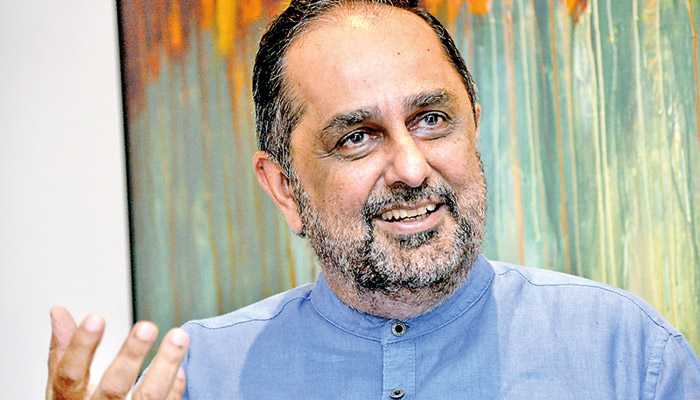We are setting this ship afloat today. There may be mutiny on board, I hope not. The sea may be stormy but the ship must sail on and enter the ports of poverty, hunger, unemployment, malnutrition, disease and seek to bring comfort to those who need it
J.R. Jayewardene at first SAARC Summit December 8, 1985.
The South Asian Association for Regional Cooperation (SAARC) is a failure. So said the leaders of the eight-nation grouping, which yesterday concluded its 16th summit in the Bhutanese capital of Thimpu.
A week before, SAARC chambers of commerce leaders meeting in the Nepali capital of Katmandu declared that South Asian Free Trade Area (SAFTA) was also a big failure.
It is with these black marks on its report card that SAARC reaches its silver jubilee this year.
Analysts can take a safe risk and claim that its leaders will again say SAARC is a failure when the grouping will mark its golden jubilee. What has gone wrong with SAARC which was launched on December 8, 1985 with much hope that it would eliminate poverty, hunger, illiteracy, unemployment, malnutrition and disease from the region?
One reason is the change in the global order. SAARC's founder leaders saw meaning in regional cooperation or regional integration within the cold-war global order that existed then. They saw regional groupings such as the European Union (EU) and the Association of South East Asian Nations (ASEAN) making phenomenal headway and wanted to emulate their success. But today it is a different world, where regional integration is not seen by many countries as the final goal of a grand political process. Politics based on national interest and national sovereignty is shaping relations among states with the nation state – not regional grouping – being the ultimate decision maker. Member-states, however, stick together within these regional groupings because they believe these non-political bodies are mutually advantageous for members and they do not appear to constrict national sovereignty.
Even the much admired EU is veering away from its ultimate goal of forming the United States of Europe – a federally-organized Europe with a powerful presidency in the centre.
EU nations have begun to think individually as shown in the manner they are responding to the financial crisis in Greece. Germany, the most powerful economy within the union, for instance, is dragging its heel without pumping in much-needed money to bail out Greece. There is little camaraderie or EU spirit. German Chancellor Angela Merkel's reluctance to help is a reflection of the public mood in Germany where people are questioning why they should forego their happiness and wealth for Greece's economic mismanagement.
The crack in the EU came months after Britain vetoed the nominations of Jean Luc Dehaene (Belgium) and Jean Claude Juncker (Luxemburg) for President of the European Commission. A few years earlier, when the United States decided to go to war with Saddam Hussein's Iraq, the EU saw Germany and France pulling in one direction and Britain and others in another direction. On climate change, too, the EU was a divided voice. As a result, it was Mr. Nobody at last year's Copenhagen Climate Conference where its presence was hardly felt.
.jpg)
The emerging global order after the demise of the cold war saw the EU expanding to Eastern Europe. It enlisted former communist economies in a hurried and haphazard manner without insisting on compliance to the grouping's strict rules – rules that Turkey, an old candidate for membership, is still finding itself difficult to comply with. As a result, the EU's growth had quantity but lacked quality.
These drawbacks together with the EU's inability to reach a common stand on foreign policy have led many analysts to raise questions regarding the grouping's future.
If this is the plight of the EU, then one can imagine the fate of SAARC in the context of the present global order.
SAARC's quantitative growth manifests largely in the number of years of its existence. Yes, silver jubilee is a big event to celebrate. But it is marked by the absence of region-wide celebrations. South Asians who represent one fifth of the humanity see no cause for celebration. Probably, the celebrations were confined to Thimpu where the 16th summit was concluded yesterday. Leave alone silver jubilee balls, many people did not know that a summit was being held in Thimpu.
Only when newspapers in Sri Lanka two weeks ago announced that President Mahinda Rajapaksa would attend the SAARC summit, many people here remembered that there was a grouping called SAARC and a summit was to be held in Thimpu. Sri Lanka held the 15th summit in August 2008 and with the end of the summit, many Sri Lankans forgot about SAARC that comprises Afghansitan, Bangladesh, Bhutan, India, Nepal, Pakistan, Sri Lanka and the Maldives.
People's lack of interest in or attachment to SAARC is not peculiar to Sri Lanka alone. It is the case throughout South Asia. This is because SAARC is achieving or going after many a goal except its primary goal of improving the living standards of teeming millions languishing in abject poverty. Twenty-five years of SAARC's existence have done very little to improve their lot. South Asia is still one of world's poorest regions. It accounts for 40 percent of the world's poor. More than 500 million South Asians live below the poverty line while the region also accounts for nearly half of the world's illiterates.
The leaders who drafted the SAARC Charter and adopted it at the first summit in Dhaka, dreamt of a SAARC identity through greater people-to-people contact, trade and visa-free travel, but 25 years on, the association has achieved little in this area, too. Rather than a common identity, the grouping is blighted by rivalry between India and Pakistan.
SAARC leaders also dreamt of making the association South Asia's European Union.
Some may say that one cannot compare the 58-year journey of the EU with the 25-year journey of SAARC. But the EU's success came within a decade and a half. In the mid 1950s, the EU, which SAARC seeks to model itself on, set targets for free movement of goods, services, labour and capital with a vision to achieving a single market. By 1968, the European Community – as the EU was then known as – had achieved many of these targets.
On the contrary, SAARC is applying political brakes or back-pedalling in the vital area of free trade. Member states are seen using loop holes in the SAFTA document to protect their vital industries and agriculture products. They simply include these products and services in the so-called sensitive list, thus blocking entry to businesspeople from other SAARC countries.
SAARC Chamber of Commerce and Industry leaders last week noted that the rivalry between states, especially India and Pakistan, had hampered the growth of South Asian Free Trade Area (SAFTA). Calling on SAARC leaders to insulate trade from politics, they pointed out SAARC's intra-regional exports were still a mere five percent of the total exports of the South Asian nations.
But will they?
In terms of power politics, India and Pakistan stand to gain in each other's misery or economic doom. For instance, if Pakistan's economy suffers, it will not have enough money to revamp its armed forces or sustain a massive army. Of course, Pakistan will be the happiest, if India's bubble bursts.
In Thimpu yesterday, the leaders went through the usual ritual of issuing a final declaration, which contained noble goals and best of intentions. But once leaders return home from the summit where regional cooperation and SAARC camaraderie overflew, SAARC is left to simmer on the backburner. Till the next summit is held, member-states will pursue their own selfish goals, giving scant regard to the SAARC spirit. Often we see a member state's relations with a non-SAARC member are warmer than its relations with a SAARC member.
SAARC's failure could be attributed to a single factor – each member state's national interest. Every member wants to get as much as possible from SAARC, if there is any, but share with other SAARC members as little as possible. There is no South Asian ideological bond that unites the people of eight countries. According to controversial political scientist Samuel Huntington, South Asia is incapable of regional integration simply because it is beset by a clash of civilizations – Islamic and Hindu – or a lack of a common civilization.
Post Disclaimer | Support Us
Support Us
The sailanmuslim.com web site entirely supported by individual donors and well wishers. If you regularly visit this site and wish to show your appreciation, or if you wish to see further development of sailanmuslim.com, please donate us
IMPORTANT : All content hosted on sailanmuslim.com is solely for non-commercial purposes and with the permission of original copyright holders. Any other use of the hosted content, such as for financial gain, requires express approval from the copyright owners.
 Sri lanka Muslims Web Portal Sri Lanka Muslims News Center
Sri lanka Muslims Web Portal Sri Lanka Muslims News Center



